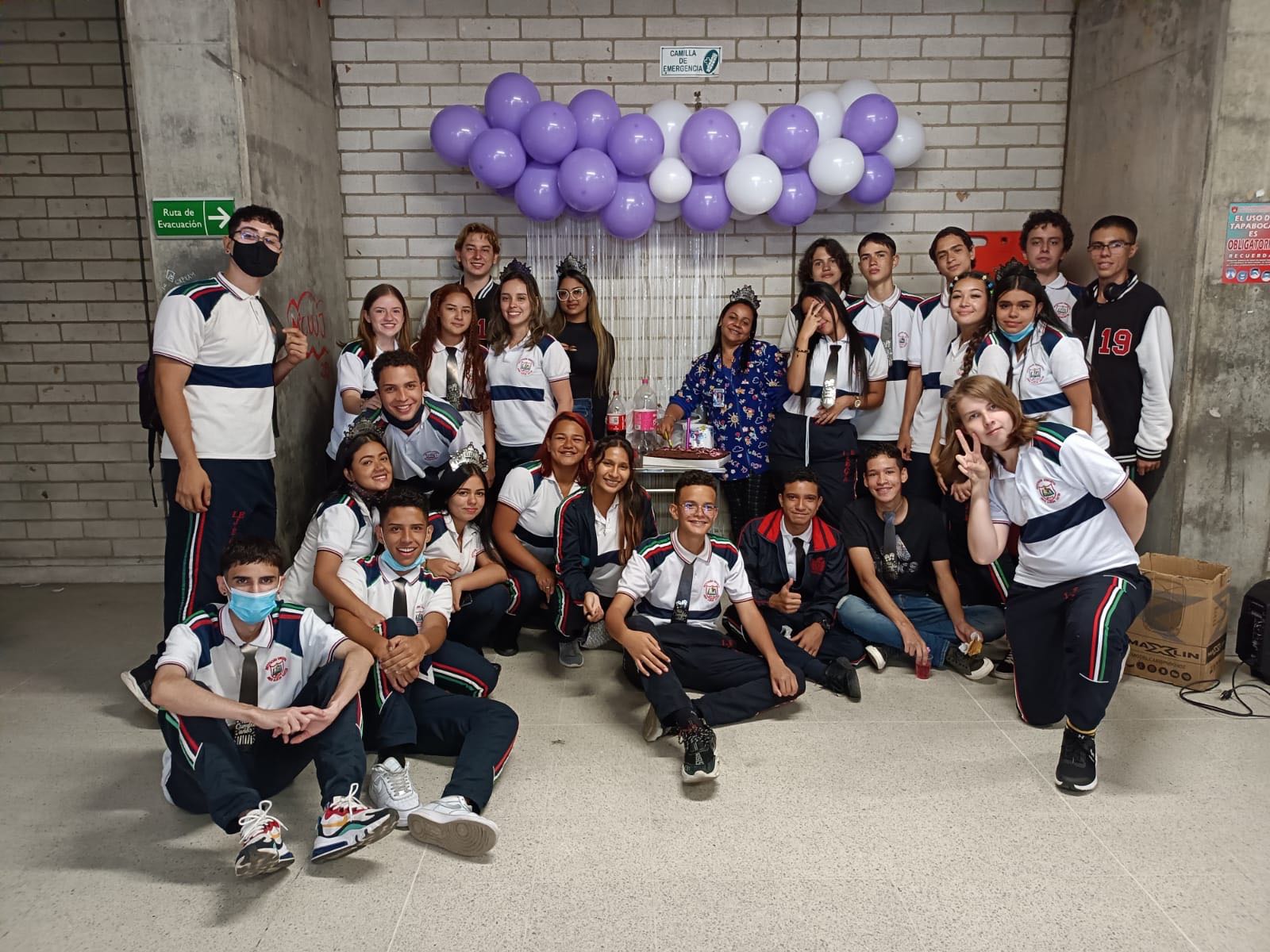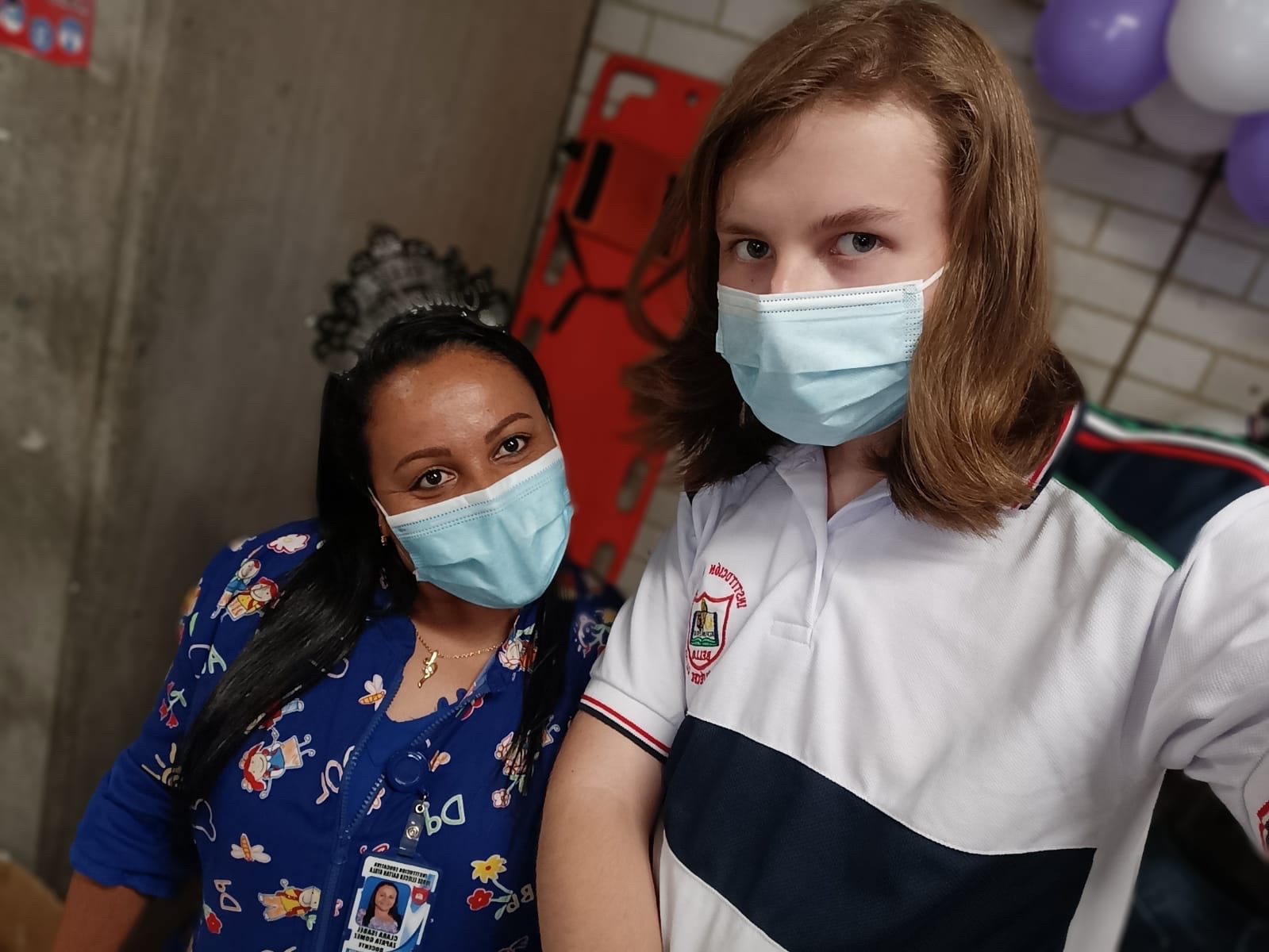My name is Benjamín, I’m from Santiago, Chile and I am a Japanese language student. Right now I’m 18 years old at the time of writing this article. Due to my parent who went to live in Colombia, I got an opportunity to spend my last year of high school in Colombia, so I want to share my experience with you.
Since the COVID pandemic started and lockdowns were imposed, many of us struggled through online classes and being locked up in our homes. At least where I lived, it was certainly a real hassle, as we had one obsolete computer to study and problems with the internet as there was only one internet provider (which sucked). Luckily I managed to complete my 11th grade in Chile (3° Medio).
My parents are divorced since I was very little, so I always lived with my mother. After lockdown restrictions and border closures lifted up in Colombia, my father asked me if I wanted to study in Colombia, and I agreed. I moved to Colombia from Chile in October 2020 and settled in Medellín.
Colombian Education System
Now, let’s give you some context:
In Colombia, high school goes from 1st grade up to 11th grade. 12th grade is a thing in some high-level private schools, but we’re not gonna cover that now.
School is divided in different levels:
Primary (1° to 6°)
Basic Secondary (7° to 9°)
High School - Bachillerato (10° and 11°).
There are 2 main types of High School Diplomas: Academic and Technical (Bachiller Académico y Técnico), depending on the school it might have either.
Academic is the most common type, it’s university-oriented and teaches general subjects such as Humanities and Sciences, while Technical is more work-centered and has different specializations, mostly construction, electricity or food prep.
Although most high schools are Academic, they also require you to do a “Media Técnica” where the school has an agreement with a Technical Institution or University and you get an opportunity to study for a 2-year Technical program, on top of your regular classes.
Such programs vary from school to school, mine had an agreement with the SENA (National Learning Service) - a National Public Technical Institution with nationwide presence and three programs: IT, Business Management and Office Administration (they also had Tourism but they don’t offer it anymore). Taking those courses was mandatory starting from 10th grade, so when you graduate you have 2 diplomas: High School Diploma and Associate Degree from your technical program. In my case because I entered from 11th grade it was impossible to join the technical program and I was exempted from this requirement.

Testing
In 11th grade, in order to graduate, you need to pass ICFES test (Colombian version of the SAT). But you just need to pass and not necessarily reach a certain score. The test consist of 5 subjects: Spanish Reading, Math, Social Studies, Sciences and English (ESL B1). Your total score is between 0 and 500 points, witch each test having an individual score from 0 to 100.
These tests are also required if you want to enter to a Colombian University. However most universities don’t require specific scores to join an Undergraduate program, as they place more importance on your academic transcripts. In some cases universities create their own admission tests.
Academic Calendar
Colombia has 2 Academic Calendars:
Calendar A is the most commonly used nationwide, it runs from January to November
Calendar B, which starts in August and ends in June. It is mostly used in really expensive private high schools, international high school, and in Cali.
Periods are divided in Trimesters, with a total of 4 periods in a year. Holidays are given for Holy Week (Colombians are very religious and they in fact have religion classes as a mandatory subject, although it’s not so relevant in public schools)
Paperwork to enter Colombia
In order to study in Colombia as a high schooler or an Undergraduate student, you’ll be required to have your studies recognized by the Colombian Ministry of Education. The process is done online on the Ministry of Education website in “Convalidaciones” section. To get started you’ll need to upload the following documents:
Copy of your passport
Academic transcripts from all school years (apostilled/legalized). If you’re from a country from the Andrés Bello Agreement [Bolivia, Chile, Colombia, Cuba, Ecuador, España, México, Panamá, Paraguay, Perú, Dominican Republic and Venezuela], you’ll only need the one from your last year)
My advice is to do this process in advance in your home country, as it might take as long as 2 months to complete.
After the process is finished, you’ll receive an email with a document that certifies that your studies were in fact recognized and you can now enter a Colombian School.
As the next step you have to go to the Secretary of Education of the Municipality and ask to be assigned a NES (An internal ID Number until you get your Cédula de Extranjería). Using it you can get appointed into a Colombian School.
Immigration Process
Getting a student visa to Colombia is quite easy if you have all your documents apostilled or legalized. You can also join the school with entry permit and later convert it into a Visa.
You will need only these documents:
Certificate of High School Enrollment
Passport
If you’re a minor:
Birth Certificate (Apostilled/Legalized)
Letter of Authorization for getting Visa (notarized and apostilled or legalized, or signed at Colombian Consulate).
Once you prepare all documents, upload them to the Colombian Ministry of Foreign Affairs website and pay 52 dollars. The process is very fast and takes at most 2 weeks if all paperwork is in order. After getting your visa, schedule an appointment at Immigration Office to get your photo taken for Cédula de Extranjería (Alien ID Card).

My personal experience
I’ve completed my 11th year in a public School in the Municipality of Bello, part of the Medellín Metropolitan Area.
Classes start at 6AM and end at 12PM. Although it sounds very early, it happens because the sun rises as early as 4:50AM. You get used to it!
Due to covid for my first 2 periods I couldn’t take in-person classes, but I had a chance to do so for the rest of the year.
My class group was very welcoming, and my headteacher also did his best to help me with cultural and academic adaptation.
To be honest, Colombian curriculum is really easy to follow, so it gave me a great opportunity to level up my knowledge since previous grades (such as 2020, in which I didn’t learned a thing.)
My classmates were the best and I really appreciate my experience of living there for more than a year. Right now I’m based in Santiago awaiting the application process for my MEXT Undergraduate Scholarship. I really miss Colombian people, who are really inviting, their amazing food, and also a really cheap cost of living. I owe a lot to them for who I am and If I had the opportunity to this again, I’ll definitely do so.


